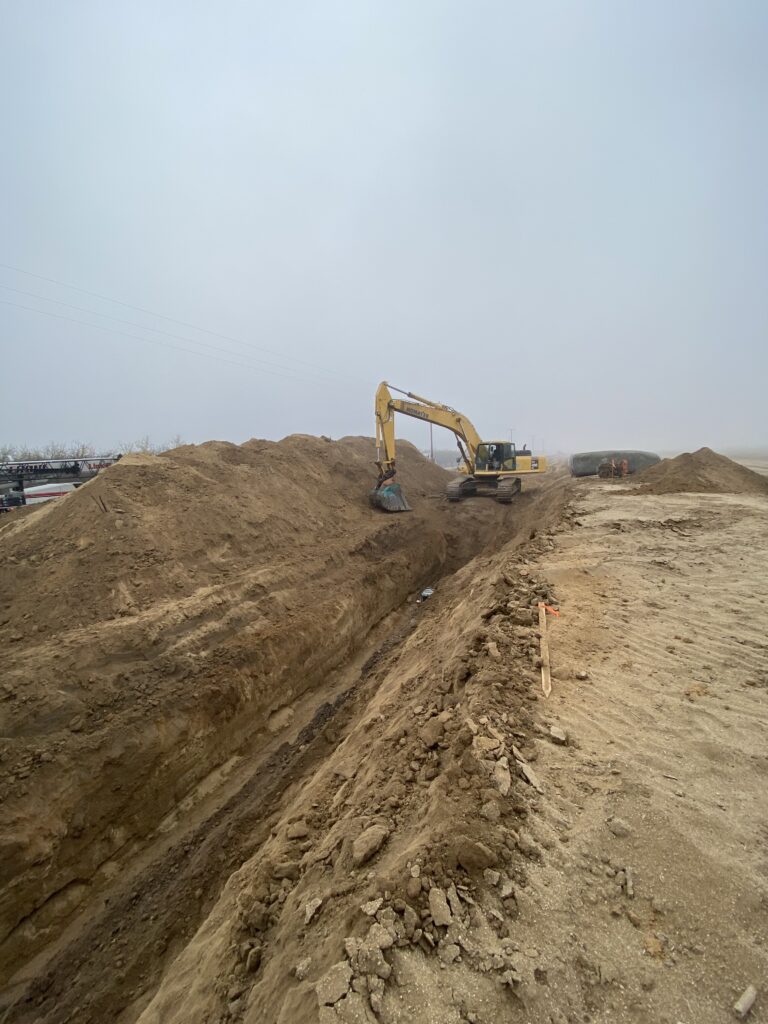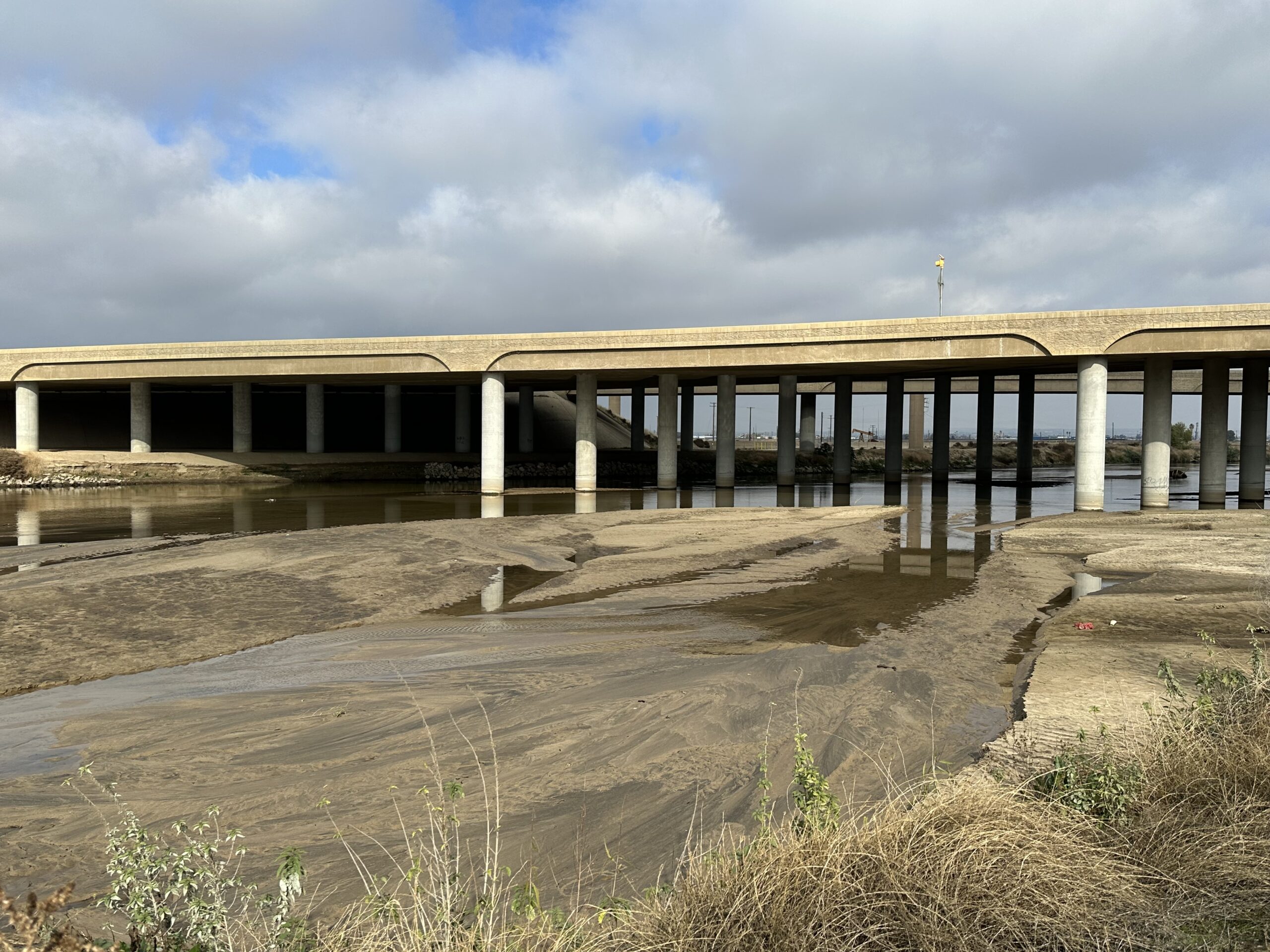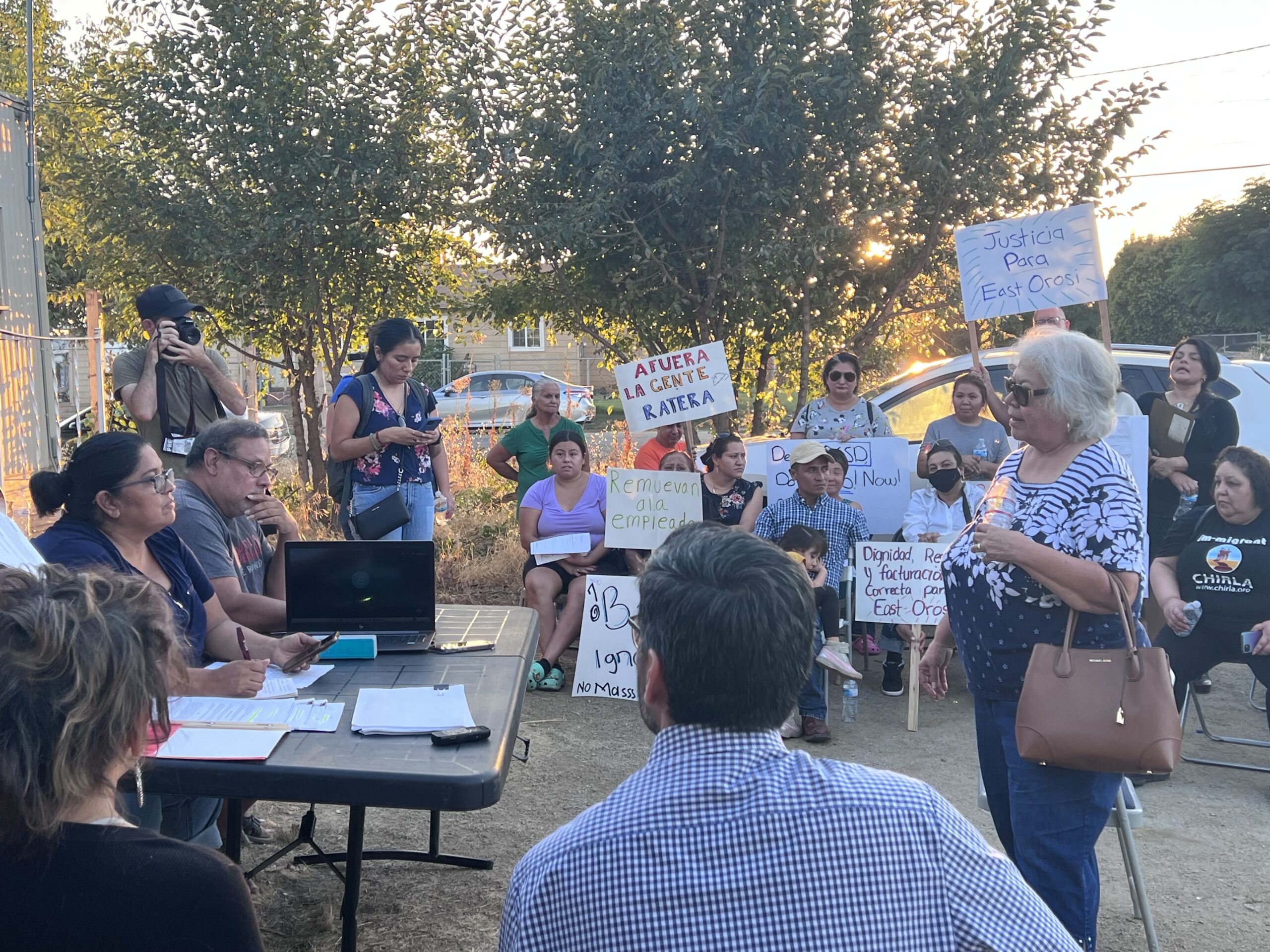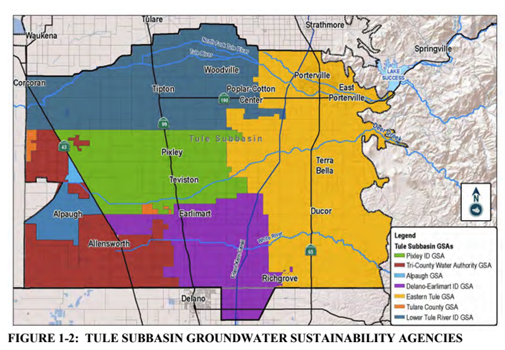Groundwater recharge seems to be priority No. 1 in the San Joaquin Valley’s scramble toward sustainability. With water restrictions on the horizon, groundwater managers can’t build recharge sites fast enough. But will it be enough?
“That’s something that’s always on the forefront of my mind, is this going to be enough?” said Kassy Chaughan, executive officer of the North Kings groundwater sustainability agency. “The answer really is, we don’t know.”
Farmers have always relied on pumping groundwater in the valley for their crops, especially in drought years when surface water is in short supply. But overpumping is causing groundwater levels to plummet, land subsidence and water quality problems.
In 2014, the Sustainable Groundwater Management Act passed and created local groundwater agencies responsible for bringing groundwater back into balance, meaning more isn’t pumped out than goes back in. The agencies will have until 2040 to reach that goal.
Recharge is the practice of putting excess water in wet years into ponding basins where it can percolate down and replenish the aquifer. It’s a method that is being leaned on heavily by local agencies as a solution to the groundwater crisis.
Race to capture “excess” water
“Everybody is looking at recharge,” said Chaughan. “We don’t want to let another year pass where we can’t capture every single drop of that water.”
Chaughan’s North Kings agency is part of the Kings Subbasin, a collection of seven groundwater agencies that cover a chunk of the valley stretching from north of Fresno down to Kingsburg. The agencies’ plans vary but they all prioritize building more recharge facilities.
Over the past two years, the Kings Subbasin has invested in 600 acres of recharge land. Not all of it has been fully constructed yet, but there is much more to come, according to local managers.
The North Kings agency has built 150 acres of that new acreage and is currently constructing a 30 acre basin.
“This is just a drop in the bucket,” said Chaughan. The agencies are planning for thousands more acres of recharge basins looking forward, she said.
But recharge only works in wet years. And some experts don’t see recharge as a silver bullet.
No way around pumping limits
“We’re never going to capture all the water from a really wet year,” said Ellen Hanak, director of the water policy center at the Public Policy Institute of California (PPIC.)
Recharge is a tried and true method, Hanak said. It could potentially help meet up to a quarter of the historical groundwater deficit. But there may be limits on infrastructure to move water from big storms to recharge locations. And the total amount of water that agencies are looking at for recharge projects probably exceeds what is going to be available, she said. Multiple agencies are eyeing the same water.
Recharge will need to be combined with demand reduction, which means cutting back on pumping, said Hanak. In a PPIC review of valley groundwater plans, the institute found that groundwater agencies did not emphasize demand management as much as is going to be needed. Hanak thinks that will change as reality sets in over the coming years.
And when it comes to recharge, Hanak wants to see more collaborative efforts between agencies instead of a “fight over the scraps.”
“If we get to a point where no matter how much recharge we’re doing the groundwater levels are continuing to decline, then one has no choice but to look at other things like demand reduction and pumping limitations,” said Chaughan.
Off the table
Many Kings Subbasin managers say restricting pumping is not on the table for the time being.
The Central Kings groundwater agency is out of balance by about 15,000 acre feet of groundwater annually. Its plan is more recharge. The agency has purchased about 200 acres of land for recharge within the next year. In the long term, managers aim to add another 2,000 acres of recharge basins. That could provide 2,000 acre feet of water per day when there is excess surface water, said Phil Desatoff, executive director of the Central Kings groundwater agency. Desatoff said recharging that amount should more than offset their deficit.
Because of the subbasin’s access to flood water, the Kings River and its water rights, Desatoff said he doesn’t think pumping restrictions will be necessary for his district. Other areas aren’t so lucky, he added.
“Those folks without surface water are pretty much screwed,” said Desatoff. “They’re going to have to fallow land.”
In Central Kings’ case, however, an ongoing legal fight over Kings River flood water could alter Desatoff’s and other water manager’s recharge plans. A water district in Kern County has applied to the state Water Resources Control Board for flood water it says current rights holders haven’t been using. That issue will likely be settled in the coming year.
Risky move
Advocates are concerned about the lack of pumping restrictions and reliance on recharge in groundwater plans.
“Seems like they’re putting their eggs all in that basket,” said Amanda Monaco, water policy coordinator for advocacy nonprofit Leadership Counsel for Justice and Accountability. “Relying on recharge is really risky.”
While SGMA doesn’t specifically require pumping restrictions, Monaco said it will be impossible to correct overpumping without them. Hoping for wet years for recharge is a gamble and still probably wouldn’t provide enough water for all the agencies’ projects, said Monaco.
In Kern County agricultural water districts have built thousands of acres of recharge basins starting long before SGMA, yet the basin as a whole is still overdrafted by 250,000 to 300,000 acre feet a year.
California’s Department of Water Resources is reviewing agencies’ groundwater plans. On November 18, it published letters to four San Joaquin Valley agencies stating their plans were deficient on management of water quality, subsidence and chronic lowering of groundwater levels. The department has yet to announce anything about the Kings Subbasin but all plans will be approved or rejected by January of 2022.
Protecting domestic wells
Dropping groundwater levels have continually dried up residents’ private wells and community system wells throughout the valley. That’s a major that isn’t properly addressed in most groundwater plans, according to the PPIC review.
In the small, disadvantaged community of Lanare, part of the North Fork Kings groundwater agency’s area, dropping groundwater levels have caused problems for the town’s already taxed water system.
The town of about 200 people is bounded by agricultural fields and has long suffered from water quality problems. In 2018, the state paid $3.8 million in grant funds to build two new community wells for Lanare. But by 2019, one well had become contaminated with naturally occurring benzine and has been offline since.
In August, the remaining well nearly went dry as groundwater levels dropped. The pump is set at 317 feet and the water table dropped down to that depth, said a spokesperson from California Water Services, the appointed receiver that manages Lanare’s water system. The water table has rebounded a bit since then, keeping the well from going dry. But the pump will need to be dropped deeper to avoid an emergency situation.
“We’re all sucking out of the same groundwater,” said Angel Hernandez, community volunteer in Lanare and vice chair of the North Fork Kings groundwater agency’s rural community advisory committee.
Hernandez’s parents have lived in Lanare since 1989. He has been helping the community for years and saw firsthand the litany of water problems that afflicted the town over time.
He’s worried about the amount of ag pumping around Lanare and the dropping water table.
“I wonder how many acre feet they’re taking of water per night,” said Hernandez. “There’s got to be cutbacks.”
Share this:
- Click to share on Facebook (Opens in new window)
- Click to share on Twitter (Opens in new window)
- Click to share on LinkedIn (Opens in new window)
- Click to share on Reddit (Opens in new window)
- Click to share on Tumblr (Opens in new window)
- Click to share on Pinterest (Opens in new window)
- Click to share on Pocket (Opens in new window)
- Click to share on Telegram (Opens in new window)
- Click to share on WhatsApp (Opens in new window)
- Click to print (Opens in new window)








